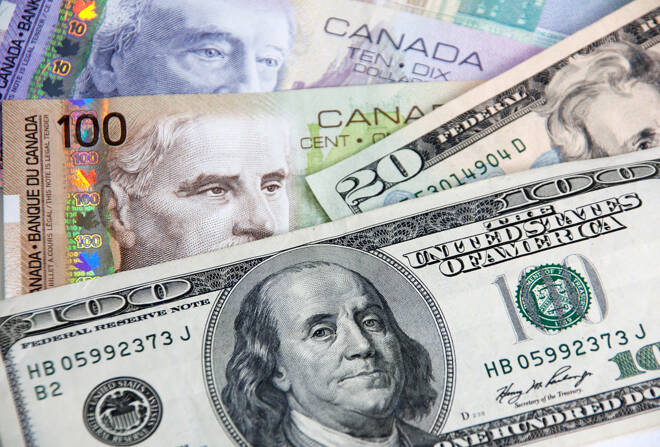Advertisement
Advertisement
USD/CAD: Loonie Strengthens For Second Straight Day But Hot U.S. Inflation Caps Gains
By:
The Canadian dollar strengthened for a second day against its U.S. counterpart on Wednesday, but hot U.S. September inflation data and weak crude oil prices have capped gains for the commodity currency.
The Canadian dollar strengthened for a second day against its U.S. counterpart on Wednesday, but hot U.S. September inflation data and weak crude oil prices have capped gains for the commodity currency.
Today, the USD/CAD fell to 1.2432, down from Tuesday’s close of 1.2465. The Canadian dollar gained about 2% so far this month after depreciating around 0.5% in September.
But those gains were capped by investor worries after the U.S. consumer prices increased substantially in September, and it is expected that the increase will continue in the months to come due to the spike in energy costs, which will prompt the Federal Reserve to tighten monetary policy sooner than expected.
Canada is the world’s fourth-largest exporter of oil, which edged lower amid concerns about inflation denting fuel demand. At the time of writing, U.S. West Texas Intermediate (WTI) crude fell 0.06% lower at $80.59 a barrel. Lower oil prices lead to lower U.S. dollar earnings for Canadian exporters, resulting in a decreased value of the loonie.
“USDCAD’s technical tone has changed considerably since our last update. The USD struggled to secure gains above the 1.28 area through mid-year and the failure to progress has caught up with the market. USD weakness below short-term trend support at 1.2575 last week leaves the USD on the verge of a more significant breakdown below 1.2422, the low from late July. Technically, weakness below this point would open up the downside quite significantly (back towards the June low) in the next 1-3 months,” noted Shaun Osborne, Chief FX Strategist at Scotiabank.
“But we think but the broader context (of a strong USD) is hard to ignore—as is the fact that trend oscillators are not yet aligned across varying time frames in a way that would allow for a high confidence call for USD weakness to extend significantly. We think a break under 1.24 should drive more USD losses but the downside may be limited to 1.22/1.23. We expect firm USD resistance on minor gains now to the upper 1.24s/low 1.25s. Key resistance is 1.2575. Look to fade USD gains.”
The dollar index, which measures the value of the dollar against six foreign currencies, was trading 0.33% lower at 94.207. The greenback has gained across most major currencies in the last few weeks as investors have become concerned the Fed may withdraw its economic support due to slow global growth and high inflation.
Investors were concerned that increasing inflationary pressures could pose a headwind to the economy and affect how soon the Federal Reserve may be able to raise rates. Rising bond yields have contributed to the strengthening of the currency.
It is highly likely that the world’s dominant reserve currency, the USD, will rise by end of the year, largely due to the expectation of at least one rate hike next year. With the dollar strengthening and a possibility that the Federal Reserve will raise interest rates earlier than expected, the USD/CAD pair may experience a rise.
“Recent history shows the dollar has struggled to benefit from strong CPI reads, but given the vicinity to the November FOMC, we expect USD strength today if headline inflation comes in at 5.3%, as markets cement Nov. tapering bets. In Sweden, Prospera’s inflation expectations rose ahead of tomorrow’s CPI, and pressure on the Riksbank is likely rising,” noted Francesco Pesole, FX Strategist at ING.
About the Author
Vivek Kumarauthor
Vivek has over five years of experience in working for the financial market as a strategist and economist.
Advertisement
